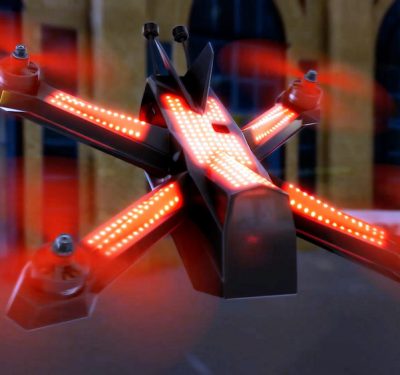After becoming the first to begin testing Draganfly’s Pandemic Drone, community push back led the Westport Police Department to opt out of the Flatten the Curve Pilot Program.
Located in Connecticut’s Fairfield County—considered the state’s coronavirus epicenter—the department had planned to evaluate how the drone could help first responders battle COVID-19. The system is equipped with specialized sensors and computer vision systems that make it possible to display fever/temperature, heart and respiratory rates, as well as detect coughing and sneezing in crowds. It can measure social distancing from 190 feet away.

Just a few days after the department made the program public, citizens began expressing their concerns.
“I am always committed to bringing our community the most innovative solutions to the public safety problems that it faces,” Police Chief Foti Koskinas wrote in a statement, which was posted on the department’s Facebook page. “Although I see the greater potential of this technology, I will always be responsive and respectful of the concerns of our citizens in every decision that I make.”
Draganfly CEO Cameron Chell understands the decision and appreciates how the situation was handled. New technologies often lead to misgivings, he said, and it may take time for people to understand the benefits such a system can provide. He points out the software doesn’t use facial recognition or collect individual data. Rather, it understands patterns within a population to allow officials to quickly react to potential health threats.
LESSONS LEARNED
Even though the engagement only lasted about a week and a half, Chell said important lessons were learned, including the benefits of measuring social distancing in real time. The technology can report, for example, that people gathering at a beach stay 4.5 feet apart on average. Maybe they start out at 6 feet, but after a bit that gap lessens to 3 feet.
This lets community leaders know they need a better public awareness campaign about the importance of social distancing, Chell said. And if they can correlate that information with health data, they can tell if the infection rate is going up in areas where social distancing is shrinking, which is vital information.
Draganfly does have plans to begin testing in both public safety and private public safety, Chell said, with the biggest demand in private public safety.
“Theme parks, convention centers, airlines, cruise lines, their concern is how do we attract consumers back to our facilities or our ships, because if I’m going to Disneyland this weekend I want to know it’s safe,” Chell said. “I see it moving to where we see health reports in the same manner as we see the weather report. Before I make a decision on if I’m going to New Orleans for a business trip, I want to understand the weather and the health report. If infection rates are up, I may reconsider.”
Today, that type of information is only available after the fact, but this technology can provide it in advance. It also can help businesses limit liability that may come if a sick employee infects anyone visiting a facility.
There’s significant interest in the technology from the public private sector, Chell said, and he expects the drone to be deployed by some companies in the next 90 days.
“The liability of not having that data to make good decisions is much greater than somebody not being happy with the information being collected,” he said. “And it’s all anonymous. They’re not under surveillance or being singled out.”
FINDING A BALANCE
On the public side, Chell sees agencies using the drone to measure social distancing and then moving on to including health data once communities become more comfortable with the technology. This will give leaders time to develop policies and procedures and to educate citizens about what the drone is doing and why it’s beneficial. But if there’s a resurgence of the coronavirus as states begin to re-open, agencies will have even more reason to begin deploying the technology, which means the move to collecting health data could happen sooner.
As evidenced by the reaction in Westport, one of the biggest challenges with deploying a drone as a health monitoring tool is “community trust and the issue of privacy,” said Gary MacNamara, public safety expert and former chief of the nearby Fairfield Police Department. Success of the system is “contingent on the battle between safety and privacy” and that means everyone involved must work together to address concerns and educate the public.
“This is unlike any crisis any of us have seen,” MacNamara said of the coronavirus pandemic. “It affects our schools, our parks, our businesses. Everything is shut down and we have an obligation to look toward a solution to try to get life back to normal. This technology, I believe, will play a role in allowing us to make better decisions and develop better plans for our communities.”






